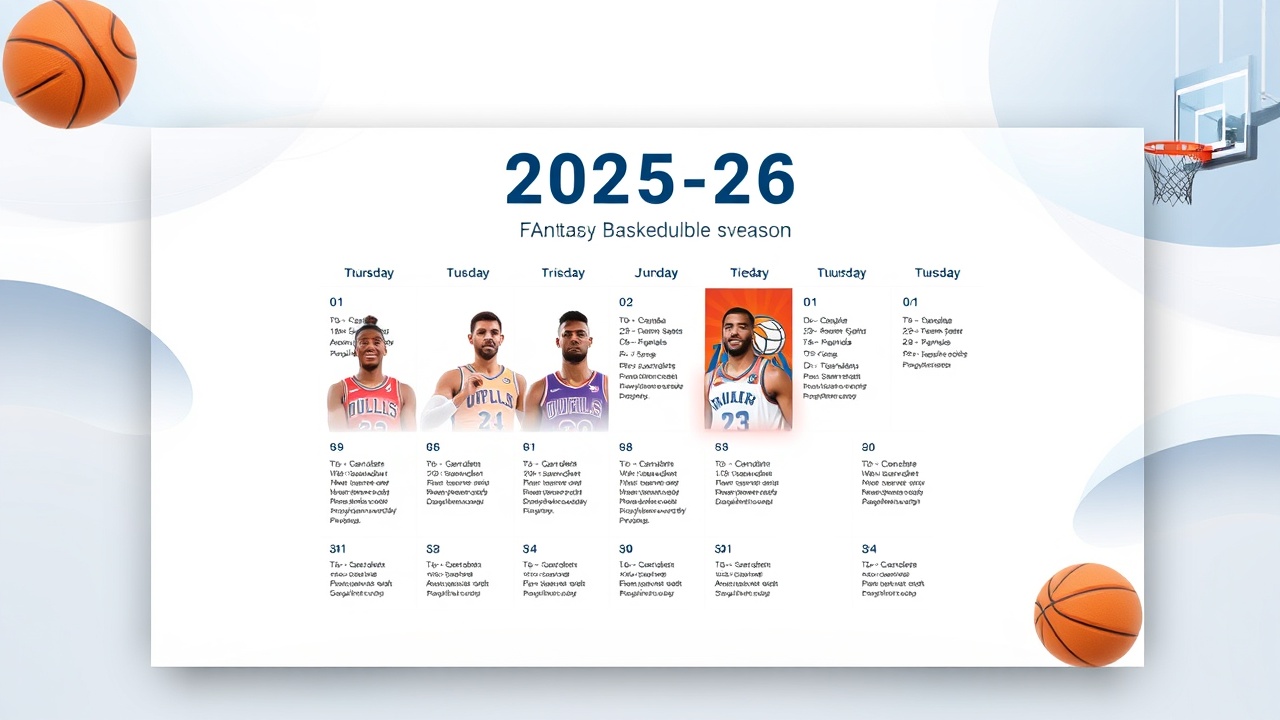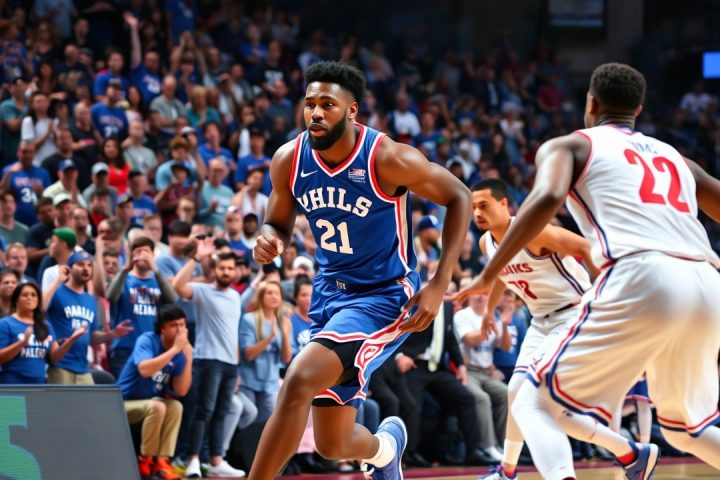Understanding the NBA Schedule for Fantasy Basketball
Authored by Joel Bartilotta for RotoWire, this piece delves into an essential but often neglected aspect of fantasy basketball strategy: the schedule of the NBA season. The strenuous demands of an 82-game schedule can influence player availability and performance, making it crucial for fantasy managers to consider more than just individual player stats.
Platform-Specific Considerations
For those gearing up for the 2025-26 NBA season, understanding the scheduling intricacies can provide a competitive edge during drafts, as well as throughout the season. Particularly for players using Yahoo, it’s beneficial to be aware of how fantasy playoff timelines may differ. The Yahoo fantasy playoffs are set from March 16 to April 5, which is strategically positioned before the final regular season week of the NBA, a time when teams often rest star players. Additionally, Yahoo will implement an extended Week 17 to accommodate the All-Star break, lasting from February 9 to February 22, thus giving managers a lengthy 14-day period for matchups.
The Impact of the NBA Cup
The newly established NBA Cup, previously known as the In-Season Tournament, is another fixture that fantasy managers must account for. The schedule for this tournament includes crucial dates:
- Group Play: Oct. 31, Nov. 7, Nov. 14, Nov. 21, Nov. 25, Nov. 26, and Nov. 28.
- Quarterfinals: Dec. 9 and Dec. 10
- Semifinals: Dec. 13
- Championship: Dec. 16
In past seasons, Yahoo has counted games from the Group Play and Quarterfinals towards fantasy matchups, while the Semifinals and Championship games did not affect scores. Unlike the previous season, where some weeks combined tournament play with standard fantasy weeks, this structure is not anticipated for the upcoming competition.
Navigating Back-to-Back Games
Back-to-back game sets (B2Bs) remain a critical variable in managing fantasy lineups. The NBA has made strides in minimizing these occurrences, reducing the average from 14.9 sets per team to 14.4 this upcoming season. Here’s how each team stacks up in terms of B2B sets:
- 16 Sets: Boston Celtics, Brooklyn Nets, Charlotte Hornets, Dallas Mavericks, Detroit Pistons, Denver Nuggets, Golden State Warriors, Los Angeles Lakers, New York Knicks, Philadelphia 76ers, Phoenix Suns, Sacramento Kings, San Antonio Spurs, Toronto Raptors, Washington Wizards
- 15 Sets: Los Angeles Clippers, Miami Heat, New Orleans Pelicans, Portland Trail Blazers, Utah Jazz
- 14 Sets: Cleveland Cavaliers, Houston Rockets, Memphis Grizzlies, Milwaukee Bucks, Orlando Magic
- 13 Sets: Atlanta Hawks, Chicago Bulls, Indiana Pacers, Minnesota Timberwolves, Oklahoma City Thunder
This disparity in back-to-backs is crucial for risk assessment. Players with injury-prone histories are likely candidates for rest during these condensed schedules, which could lead to missed games. As an example, Joel Embiid’s 16 B2Bs increase the risk of missed games compared to healthier players on teams with fewer sets.
Preparing for Fantasy Playoffs
Analyzing the distribution of games during fantasy playoffs allows for sophisticated strategy development without needing to overhaul draft plans. The Yahoo fantasy playoff matchups, spanning from March 16 to April 5, show varying game counts:
- Quarterfinals (March 16-22): 5 games for the Phoenix Suns and Washington Wizards are advantageous, although concerns about potential ‘tanking’ strategies must be weighed.
- Semifinals (March 23-29): A two-game week for teams like the Minnesota Timberwolves and Phoenix Suns could hinder fantasy success, as would two-game weeks during the championship for Denver Nuggets, New York Knicks, or Portland Trail Blazers.
Across the three-week fantasy playoff period, total games played provide an overall strategic context. Teams playing 12 games—such as the Rockets, Grizzlies, Magic, and Wizards—will present significantly better opportunities than those with only 9 games like the Nuggets and Knicks, who stand as serious drafting considerations.




